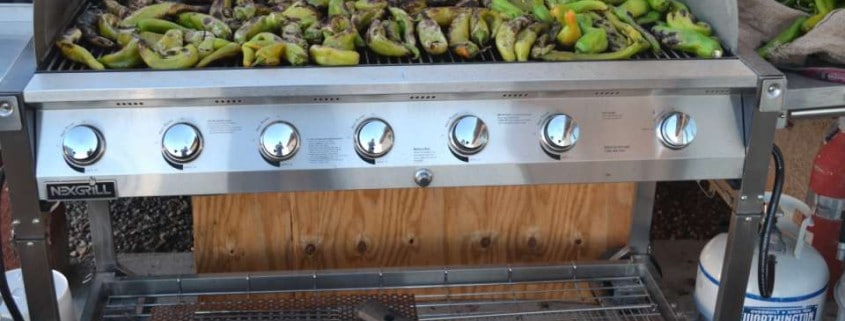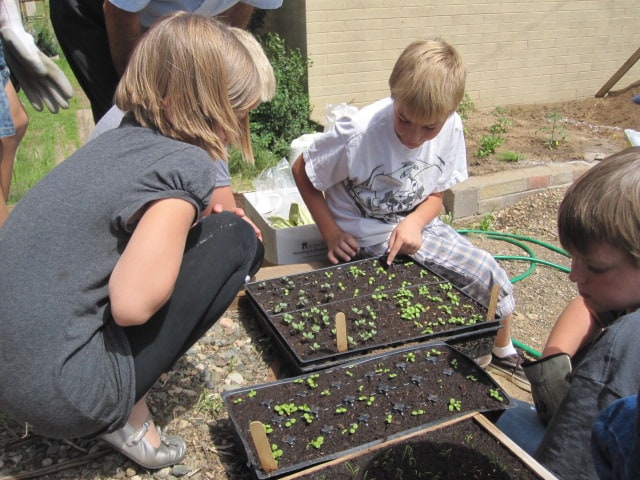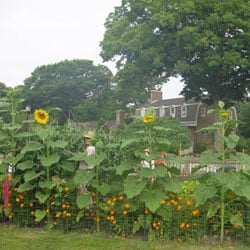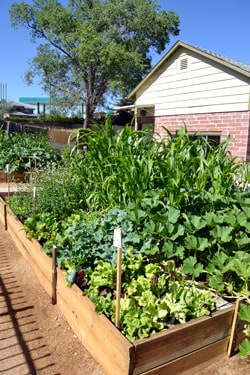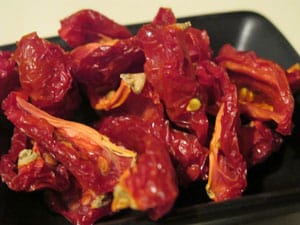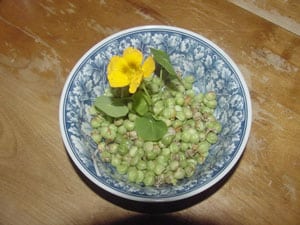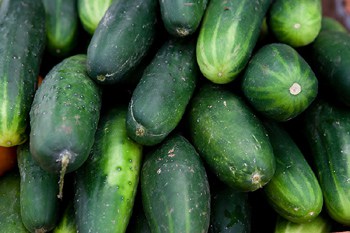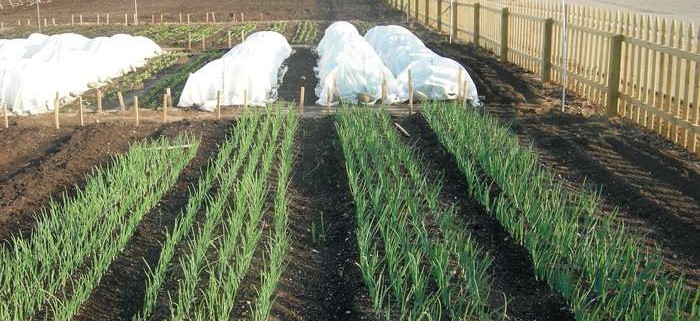I grew up eating this green chile stew, or as we simply called it – green chile. Mention green chile in most places in the Southwest, and people will understand that you are talking about a bowl of stew, made with green chiles, herbs, sesonings and usually pork. We would make a huge batch of it in the fall, roasting, peeling, seeding and chopping upwards of 50 pounds of the Hatch New Mexican green chiles on the first day. The next day we would make the recipe in huge kettles on the stove to serve at Thanksgiving, Christmas and celebrations at the end of the year. What we didn’t eat immediately we would freeze for the coming year. Thanksgiving just wasn’t really complete without a bowl of green chile on the table, to be ladled over the turkey, mashed potatoes or in a bowl on the side to be savored all by itself. Christmas was much the same. That green chile was something to be looked forward to each time we took it out of the freezer for that night’s dinner.
We learned the foundation of this recipe from an old family friend from a small town in the state of Chihuahua in Northern Mexico. She grew up poor, so her family grew and raised almost all of their own food, including chiles that were used in almost all of their cooking. The flour and oil is used to make a roux, or thickening sauce that gives the dish a nutty flavor as a backdrop for the chiles and meat to take center stage. It takes a bit of time to make, so make a lot to freeze for later. It doesn’t take any extra time to make more, especially if you aren’t roasting, peeling, seeding and chopping the chiles yourself. You can order them directly from companies such as Biad Chile Company and get them delivered to your door, or go to your local farmer’s market where there will probably be a propane powered chile roaster spinning away, creating fresh roasted chiles right before your eyes.
This recipe will give you highly tasty, mild green chile. You can spice it up with hotter green chiles, or with some varieties of hot red chiles as you like. Green chile is ubiquitous in the Southwest, every family has their own take or twist on the basics, so no two are alike. In Santa Fe, you can go from one restaurant to another directly across the street and the tastes will be noticeably different, but delicious.
Here’s where the story takes a little jag. Last year we raised Navajo Churro sheep for the first time. After we got them back in little white packages, we tried them in this recipe, as we had run out of pork. It turned out to be one the best tasting green chiles that I had ever eaten. The Churro has just the right flavoring that pairs beautifully with the chiles to make an outstanding dish. Home or locally raised pork is also excellent, as it has much more flavor than commercially raised supermarket pork.
Serve with a garnish of chopped cilantro and a swirl of sour cream if you want to dress it up a bit. Warm tortillas are a great accompaniment. Give it a try and let us know what you think!
Old Time Green Chile Stew
- 1/2 cup flour
- 1/2 cup oil – olive, coconut or vegetable
- 2 – 3 medium onions, chopped
- 4 – 6 cups water
- 2 – 3 lbs Navajo churro lamb or home raised pork cut into bite sized pieces
- 5 lbs Hatch mild green chiles, roasted, peeled and diced
- 2 heads of garlic, peeled and sliced
- 1 Tbs fresh ground black pepper
- 2 Tsp salt
- 1 Tbs whole cumin seed, roasted and freshly ground
- 1 Tsp whole coriander seed, roasted and freshly ground
- 1 Tbs Mexican oregano, lightly toasted and freshly ground
- 1 Lb fresh tomatoes or 1 16 oz can of chopped tomatoes (optional)
- 2 – 3 medium potatoes, diced (optional)
- Before starting, have onions, lamb/pork, green chiles and 2 cups water prepared and ready at hand.
- In a heavy stock pot, preferably cast iron, heat oil over medium heat. When oil is warm, add flour and brown to make a roux. Stir constantly with a spatula, reaching all parts of the bottom of the pan to keep flour from burning. The mixture will bubble and foam as it starts to brown, then settle into a smooth consistency. The color will change from white to an old copper penny color and the odor will go from flour and oil to a roasted aroma. Be careful not to burn the flour, as you will need to start over. If in doubt, stop browning at a slightly lighter color.
- To stop the browning process, add the onions and 2 cups water. It will hiss and steam as you add them, stir mixture well to cool roux and brown the onions. When onions have started to brown, add lamb/pork and brown.
- Add chiles and remainder of water, stirring well. While chiles start to simmer, roast cumin and coriander in small skillet over medium heat until they release their toasted aroma and add Mexican oregano at end to lightly toast. Grind them in mortar and pestle or food processer.
- Add herb mixture to chiles, along with garlic, salt and black pepper.
- Stir mixture well, reduce heat to a low simmer and check on every half hour or so until meat is tender and flavor has mingled well.
- If desired, tomatoes and potatoes can be added at start of simmering for a different flavor profile.
Makes plenty for a large dinner and enough to freeze 6 – 8 quarts.
Recipe Tip! This is a very mild “heat” with great flavor, but can be modified by using hotter chiles to suit your spice tolerance.

